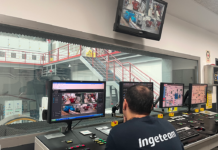As market demand for wind turbines has grown, so too have the demands for quality and performance. This is especially the case for critical components such as power converters, as the performance of the whole turbine depends on them.
The response is focused on increasing the reliability and durability of these components, making wind turbines more economically viable assets. High-quality design and extended validation methods of power converters are key to guaranteeing the reliability and durability of the turbines in wind farms facing the toughest operating conditions.
Ingeteam’s new-generation power converters have been validated using the toughest test scenarios and most realistic configurations, to prove in advance that the converter will be properly integrated within the turbine and operate correctly under the most demanding situations.
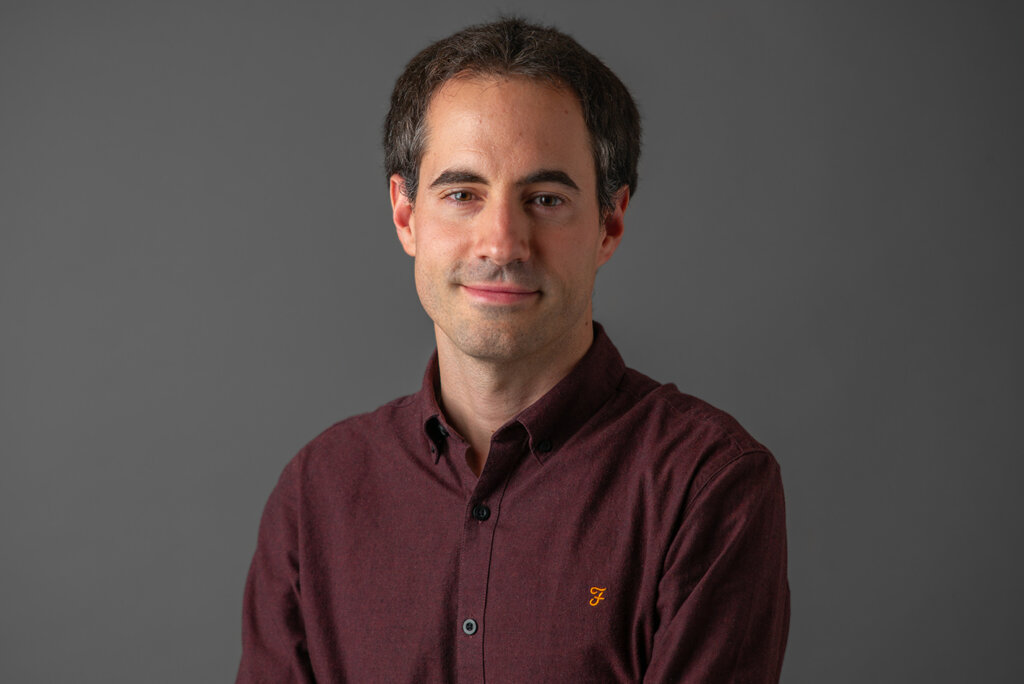
The market demands continuous performance improvement, and regulatory innovations take this factor into account. Ingeteam participates in the committees that issue these requirements and integrates the latest regulatory developments at the design phase.
This method is also applied to the company’s manufacturing plants to comply with all marking requirements. In fact, the certification of the converter facilitates the certification process for the whole wind turbine.
High-power DFIG application
To this day, doubly-fed induction generator (DFIG) converters remain the most proven, efficient and cost-competitive drivetrain topology for onshore applications. Ingeteam’s DFIG converter series offer cost-optimized products for each market and application. These wind converters are extremely grid-friendly and include FRT, SCR and SSR features, enabling them to be deployed anywhere in the world.
Ingeteam’s DFIG converters can be modulated to bring customized solutions that will effectively minimize wind turbine levelized cost of energy. Vast knowledge and experience have been mobilized to generate design processes that combine development and validation, to ensure the supply of optimized DFIG power converters in the wind market for high-power applications in the range of 6 MW to 8 MW.
Because of the application’s particularities, the grid integration of the system is one of the most sensitive elements to keep the technology competitive and reliable while increasing the turbines’ rated power. DFIG generators and the core components of the converter are the key factors that ensure a robust and reliable solution against the various grid events that could occur, such as harmonic fulfilment, FRT, weak grids or SSR. The capability of managing these events in virtually all locations is a key added value that Ingeteam has successfully achieved, with a high-quality model correlation that allows analyzing any event or location that could arise.
Validation process
As a critical wind turbine component, Ingeteam’s new-generation power converters must meet the highest quality requirements for wind turbine performance. Ingeteam’s new power conversion solutions have been subjected to the tests required by IEC61400 for wind turbines, and IEC62477-1 and IEC61800-3 for power converters, verifying the correct performance and the highest level of safety.
Within this validation process, a large number of tests are focused on the assessment of energy and temperature hazards. For example, the behavior of the converter in the event of failure of a cooling system or insulation components is assessed by means of functional tests, simulating these failures. In addition, mechanical tests such as IP degree, corrosion, impact or vibration also form part of the validation. All these tests guarantee the safety and correct performance of the power conversion solutions.
Ingeteam considers that an “extended validation” of power converters is appropriate in order to optimize the design and minimize any potential issues that may arise during the integration of the component within the wind turbine.
The objective of this “extended process of validation” can be summarized as follows:
To identify design improvements or detect any design failures of the converter at the earliest stage of development, thereby minimizing subsequent design and manufacturing costs due to modifications at a later stage of implementation that would imply the use of more resources.
To test the converter under the most realistic conditions to validate the design under all possible scenarios and to verify that it complies with requirements. The more accurate the test is regarding the behavior on-site inside the turbine, the greater the reliability of the tests and the results obtained.
Ingeteam carries out four types of tests to provide accurate data about the behavior of its converters when installed on-site:
- Combination tests in full-scale test benches
- Extreme climatic condition tests
- Extreme mechanical condition tests
- Electromagnetic compatibility tests
Combination tests
The correct behavior of a power converter can be verified without the use of a generator by means of external power supplies and passive components. However, this kind of validation process cannot fully guarantee the correct integration in the field.

Specific characteristics of the generator could affect the behavior of the converter, and combination tests make it possible to anticipate them. Some processes are not possible to simulate and assess by means of calculations, and empirical methods are the best way to do that. In addition, combination tests with power-limited generators or mock-ups may not allow the required points to be assessed.
Ingeteam carried out these tests using the same generator as in the final application, which is critical. Combination tests with a generator at full scale enable the correct performance assessment of the converter at any desired point. Thus, a full validation process is obtained as the converter operates along the whole operation ranges. This process includes, at a minimum, variable parameters including grid voltage and frequency, generator speed, reactive or active power, and temperature.
Extreme climatic condition tests
A critical point of a validation process relates to climatic conditions. Empirically verifying the correct behavior of a converter and its components along the whole climatic range is important in order to detect unexpected behaviors that cannot be predicted by means of calculations. Ingeteam is able to carry out a detailed validation thanks to its test benches, which are able to control temperature and humidity over a very wide range, and where the converters can operate at rated conditions.
Executing tests at the extreme limits of temperature and humidity allows the observation and understanding of the specific behavior of components when they operate close to their limits, and to define the best options regarding functionality and cost. Without this empirical analysis, the selection of components would be based on theoretical calculations and datasheets, making a conservative selection that would imply overrun, more likely. With this validation, the optimum design is obtained.
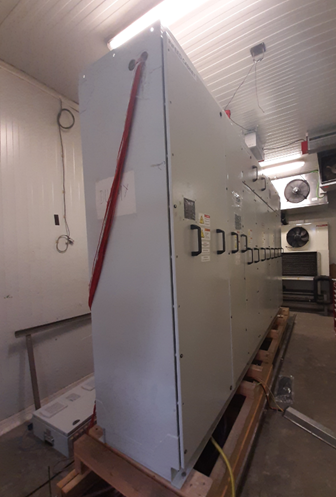
In addition, the performance in case of failure can be assessed in detail. Without this kind of test infrastructure, it would be impossible to know how the converter really reacts when a component such as a fan or a cooler fails. The behavior at a specific room temperature or humidity value could differ drastically from another value. This uncertainty is overcome by carrying out failure tests at several climatic points to identify the real performance at each point without depending on assumptions and calculations that could provide erroneous conclusions and lead to designs that do not fulfil the requirements or could even be dangerous.
The climatic extreme conditions validation includes heat run tests, cold climate tests, full condensation tests and damp heat tests.
Extreme mechanical condition tests
Another critical part of the validation process of the converter for its final application is the assessment of its behavior and response to low-frequency vibrations. Incorrect behavior could cause severe damage to the converter and the wind turbine.
Depending on the wind turbine, the location of the converter and the fastening structure, the response could change drastically. Thus, this is a process to be carried out for each wind turbine-converter combination.
Prior to the test, Ingeteam develops detailed finite element method (FEM) models to predict the response of the converter and to assess the different design options.
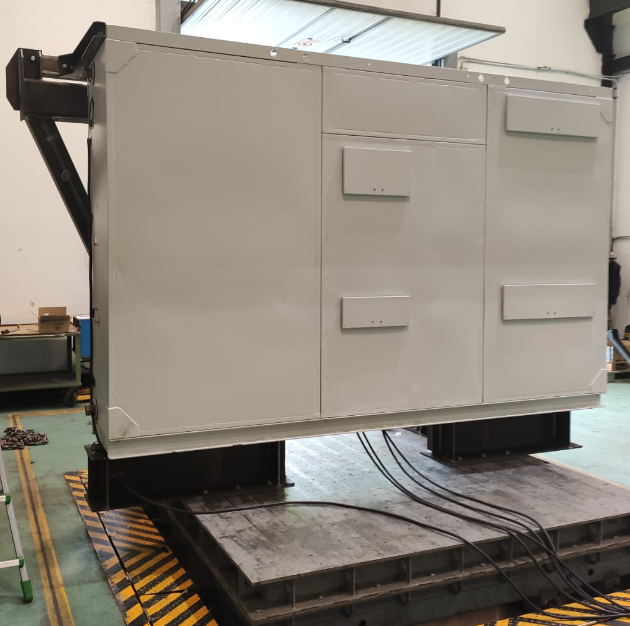
The main test consists of sinusoidal sweeps using the specific frequency-acceleration profiles. These profiles are defined based on accelerated test processes, with the aim of simulating the whole accumulated damage along the life of the turbine in only a couple of hours.
During the tests, the resonances are checked because any changes in their frequencies could lead to structural damage.
In addition, shock tests with extreme acceleration values are carried out.
Following these tests, the converter must remain operational. No damage affecting safety can be accepted. Passing these tests guarantees that the combination of converter and wind turbine is correct and will withstand the lifetime of the turbine. The results are also correlated with the FEM models developed.
Electromagnetic compatibility tests
The immunity of the converter against the emissions of the environment or emissions generated by nearby devices is critical to guarantee the maximum availability of the turbine. Also, the converter itself can generate emissions that could affect the correct operation of nearby items (within or outside the turbine).
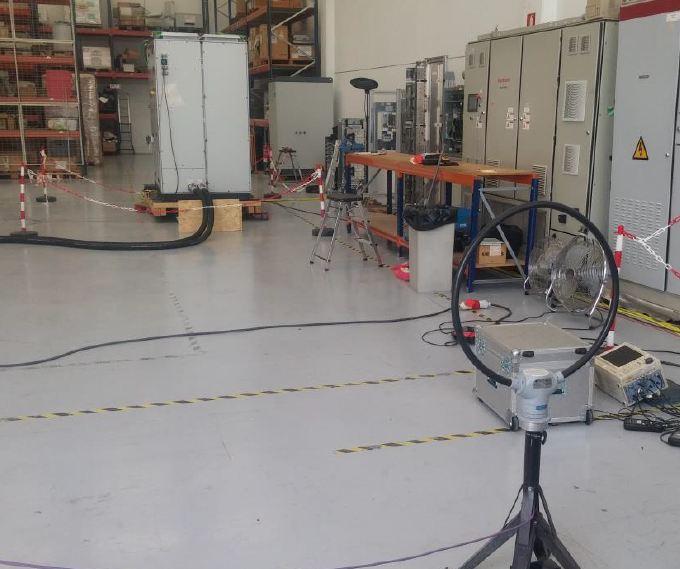
To confirm that the converter is able to operate in an environment within the expected emissions limits, compatibility tests according to the IEC61800-3 standard are included in Ingeteam’s validation process. These tests are carried out in the manufacturing plant, using the most representative configuration, and by certification bodies.
Passing them drastically minimizes the risk and uncertainty regarding EMC.
Certification process
Another cornerstone of Ingeteam’s design process is certification. Achieving the combined requirements of maximum durability and reliability with cost optimization is essential, but Ingeteam understands that different international standards can present a barrier for wind turbine installation. Therefore, Ingeteam considers the strictest international standards for all its designs.
Ingeteam participates in the committees that issue these requirements, stays up to date with the latest regulatory innovations and implements these innovations in the design phase of the converter. Being proactive regarding regulatory demands leads to the improvement of new converter designs and avoids late modifications that could delay a project. Any new design within the company integrates the strictest standards for all the applicable marks and labels, including CE, UL and DNV-GL.
Ingeteam participates in IEC committees such as TC22 (Electronic Power Conversion), TC88 (Wind Energy Generation Systems) and IECRE (IEC Renewable Energy), along with specific working groups within IEC, such as WG05 (Hazardous Substance) and WG26 (SW testing). We also participate in STP UL groups for the development of standards like UL508 (Industrial Control Equipment).
This approach is not only applied to product design, but also the manufacture of the products in our plants. For that purpose, the plants are certified for the manufacture of any component and marked with the main wind mark labels. These certifications confirm international compliance and avoid project delays due to any marking regulations and barriers. In addition, they facilitate the certification process of the wind turbine.
Ingeteam has already certified its plants for power converters within DNV-GL and UL scopes, and in addition has been trained for APQP4Wind.
Conclusion
Extended validation of Ingeteam’s new generation of power converters confirms their operational performance under the most severe conditions. The use of full-scale test benches for integration assessment and climatic behavior evaluation is key to optimize the design and detect potential improvements at an early stage. The information obtained from the tests assures the optimization of the design and guarantees that the converter is going to operate properly in the field.
The incorporation of the latest and most stringent regulatory requirements at the design phase and also in the certification of the manufacturing allows Ingeteam to facilitate the wind turbine certification process, wherever the geographical location, thereby reducing the project time-to-market and saving costs throughout the development and validation design processes. Clients can be confident that, thanks to extended validation, Ingeteam’s new products deliver the best on-site value for money.
To learn more, please click here.
Ion Etxarri is R&D quality and innovation manager for Ingeteam Wind Energy.

